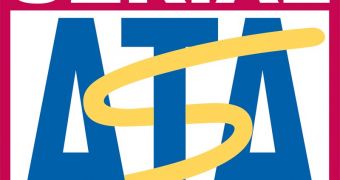The Serial ATA International Organization has just announced the completion of the SATA 3.1 standard which brings a number of new features to the table including new power saving technologies, TRIM command queuing for SSDs, and Universal Storage Module (USM) support.
First introduced in January 2011, USM enables removable and expandable storage solutions to be used with consumer electronics devices.
This means that developers can incorporate slots into televisions, game consoles, set-top boxes, computers, docking stations and other consumer electronic devices that will accept powered, cable-free storage modules with integrated powered SATA interfaces for expanding storage capacity.
This is seen as the most important new feature brought to the new standard and is part of a series of SATA-IO initiatives designed to extend SATA technology beyond traditional PC storage.
In addition to USM, SATA Revision 3.1 also includes several additions meant to increase energy efficiency including a new stand-by mode for SATA optical drives that completely eliminates power consumption when they are not in use.
Another interesting addition brought to SATA 3.1 is the support for queuing SSD TRIM commands, that allows the drive to perform this type of operations at a later date in order not to affect the performance of the SSD when in use.
“As the storage industry continues to evolve, developers are looking for more ways to incorporate high performance storage solutions into their products,” said Mladen Luksic, SATA-IO president.
“The features included in the SATA-IO Revision 3.1 specification help make SATA technology accessible to a wide range of device segments from mobile devices to consumer electronics products and traditional PC systems.
“These features demonstrate SATA-IO’s commitment to providing cost-effective, high performance storage solutions to the entire industry,” concluded Mr. Luksic.
The SATA 3.1 specifications are available right now from SATA-IO. The press release doesn't contain any information regarding the date when the first devices supporting this new standard might arrive to market.

 14 DAY TRIAL //
14 DAY TRIAL //